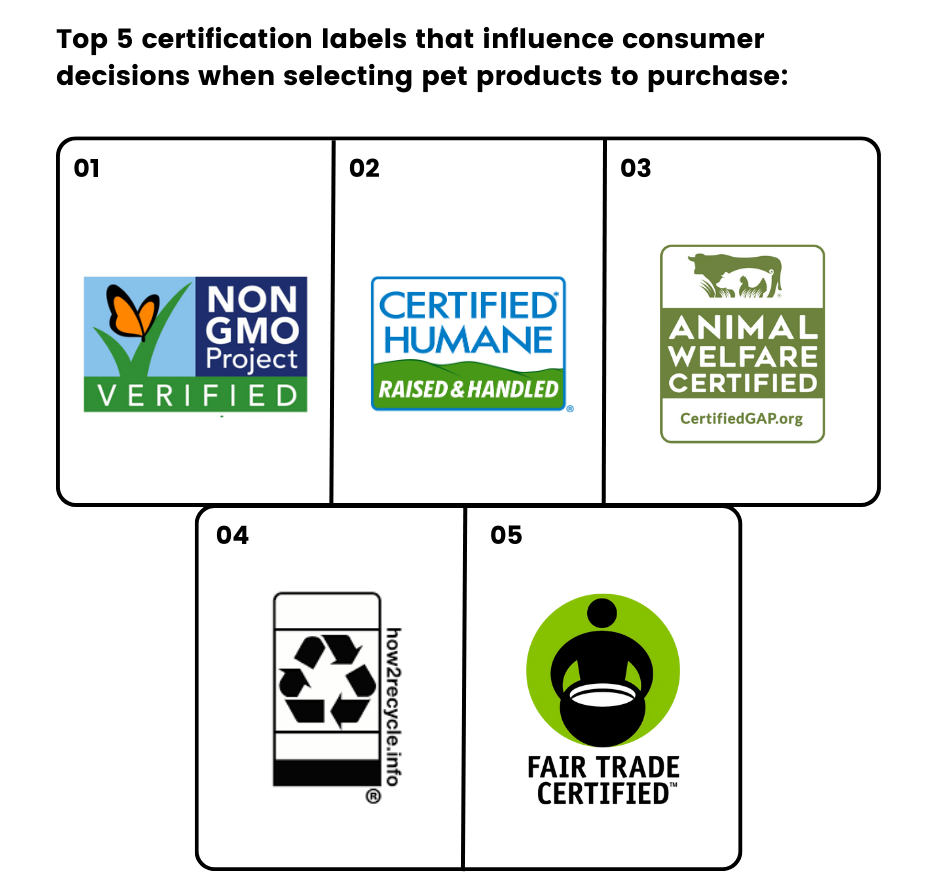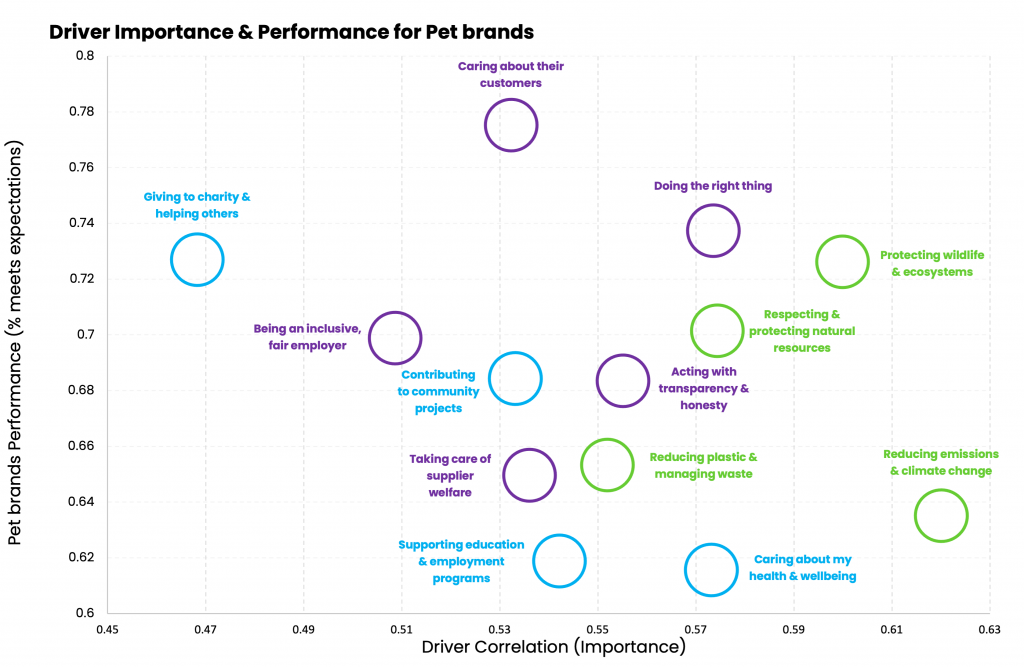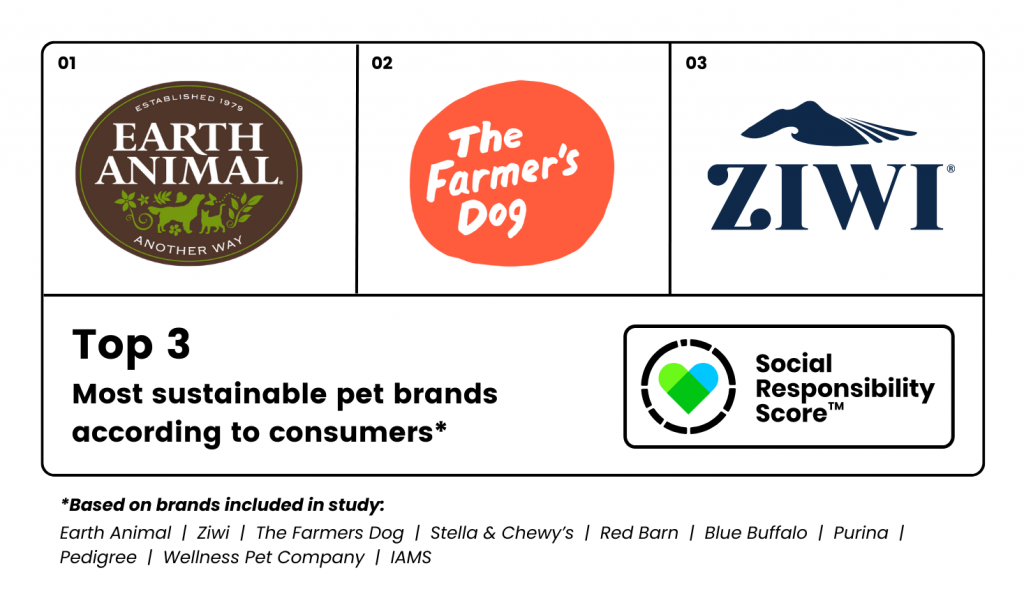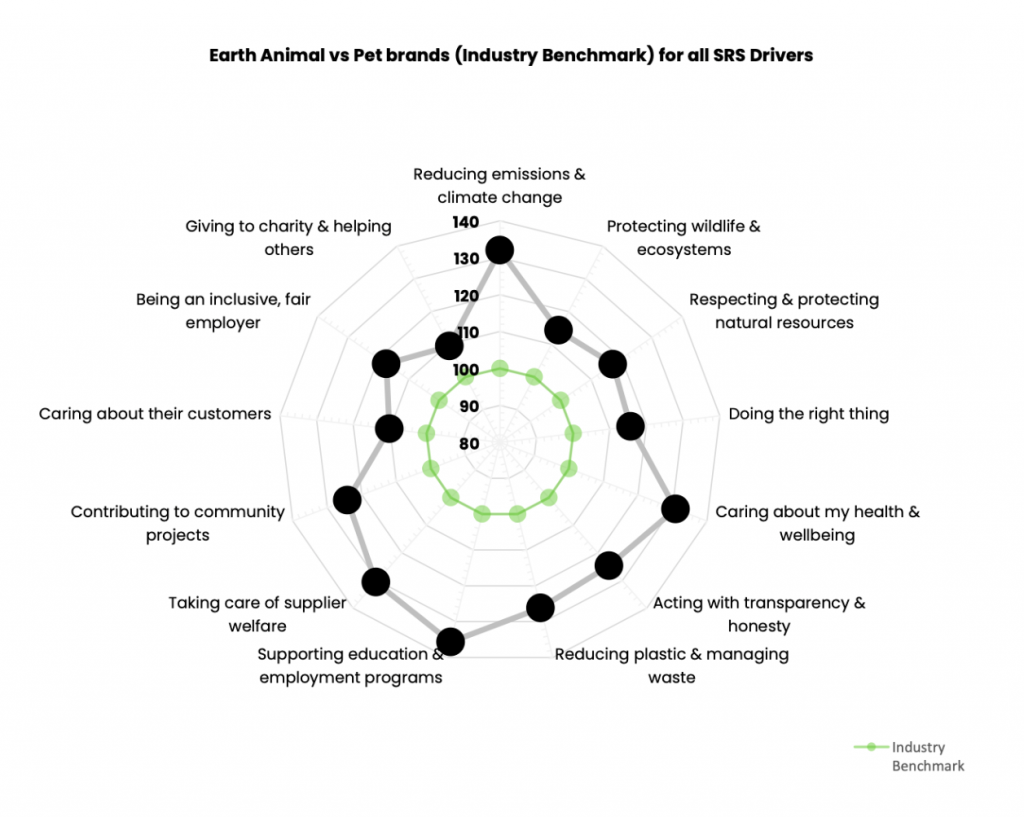Discover what sustainability means to the pet industry and how Earth Animal supports the sustainability agenda.
Earth Animal isn’t just a pet brand – it’s a heart-driven mission that started back in 1979. From day one, they believed in a kinder, more sustainable way of caring for animals, people, and our planet.
Back then, talking about sustainability in the pet industry was like speaking a different language. But times have changed. More and more of us are thinking about how our choices impact the environment, not just for us, but for our furry friends too.
Summary:
- New research investigated consumer sustainability expectations of the pet industry and brands
- The pet industry is seen as progressive, but there is much more to do to take a leading position in consumers’ minds
- Environmental concerns are top of mind for most consumers
- Earth Animal is seen as a sustainability leader amongst the brands measured
- Even leading brands have opportunities to improve perception (and therefore action) amongst specific consumer cohorts or in specific issue areas
- Program awareness drives improved perception and action
- Investigation of packaging certifications highlighted that consumers value these credibility shortcuts but that more education is necessary around what many of them actually mean
Read the full case study below for more details.
The challenge
Since Earth Animal was founded in 1979, the brand has been “pioneering a more humane and sustainable way of enhancing and preserving the quality of life for animals, people, and the Earth”. Sustainability has been at the heart of Earth Animal’s brand for over 40 years, and while many other pet brands have started implementing sustainability strategies in the last few years, the industry as a whole is still perceived to be lagging.
But that is changing. Consumers are becoming more aware of their product choices’ environmental and social impacts, for themselves and their pets. Results from a recent private consumer survey study by Earth Animal show that 3 in 5 dog parents in the U.S. find sustainability important or very important when purchasing products for their dogs.
Additionally, due to sustainability considerations, close to 1 in 5 (17%) of pet parents claimed to have switched brands in the last six months. Glow estimates that the total sales value of sustainability-driven switching in pet this year alone is worth $600M. The brands that lean into sustainability programs and communicate those efforts will continue to benefit, while those that don’t risk losing customers.
As expectations rise, pet brands need to understand what their key stakeholder, consumers, expect of the industry and brands and learn what drives consumer perceptions and product choices. Only then can brands optimize their strategy, marketing, and communications to drive more loyal customers.
It is also worth noting that consumers are not the only stakeholder with rising expectations. Sustainability criteria are increasingly important factors in investor choices and influential in attracting, retaining and motivating employees. Most people want to work in a workplace with purpose and younger generations are willing to make personal sacrifices to take roles that align with their values.
The solution
Earth Animal collaborated with Glow to understand the sustainability expectations of consumers regarding the pet industry and brands. The research leveraged Glow’s Social Responsibility Score™ (SRS) system, a proprietary approach to measuring perception of environmental, social, and governance performance.
The research focused on answering six key questions:
- How is the pet industry seen to perform on sustainability compared to other industries?
- What are the main drivers of consumer perception within Pet and how do consumers feel pet brands are performing in those areas?
- What differences in perception exist across demographic cohorts?
- What’s the revenue opportunity for brands to capture? (based on consumers switching towards more sustainable brands)
- How do consumers view Earth Animal? What are the brand’s major risks or opportunities?
- How aware are consumers of certification labels? How do these labels influence purchase decisions?
The pet industry is helping to drive the sustainability agenda
Glow tracks consumer perception of industry performance across 51 US industries on a monthly basis. Pet ranks 10th in consumers’ minds, 35% above the average for all industries, which puts it in the top quartile of industries measured. When you narrow the audience to pet parents specifically, perceptions of the pet industry improve further (SRS +19%). This is not a surprise, as pet parents are more engaged with pet brands and have a stronger sense of the environmental and social practices within the industry.
Within the group of pet parents, there are differences in perception across demographics. Males scored higher than females. Millennials were the most positive among generational cohorts with Gen X representing the group with the lowest overall assessment of industry performance. Regions differed as well, with higher scores in the Northeast and more skeptics existing in the West.
What drives sustainability perceptions for pet brands?
To understand what is behind overall industry performance, we analyzed Glow’s 13 drivers to see the most significant influences on industry perception.
The drivers that are most important in overall perception of pet brands are:
- Reducing emissions and climate change *
- Protecting wildlife & ecosystems *
- Respecting & protecting natural resources
- Doing the right thing
- Caring about my health and wellbeing
*Importance over indices compared to average across industries
The expectations of pet parents are weighted towards the environmental drivers with three of five being deemed the most important.
The best opportunity to focus and maximize impact on perception is within two of the most critical drivers: “reducing emissions and climate change” and “caring about my health and well being”, as those are most important but lower performing. For brands who have initiatives in these areas, the opportunity exists to further educate consumers.
It shouldn’t go unnoticed that three of the most important drivers of perception are also in the top five performing drivers as well. When looking across industries, this is typically not the case, as most important drivers tend to be the lowest performing as well.
Although there are areas of positive progress, there is still work to be done. More than 3 in 10 consumers are not satisfied with the industry’s performance in 9 of the 13 drivers, highlighting the opportunity to get more specific on program messaging and resonating with key cohorts of skeptics.
How is pet different from other departments?
When assessing the top drivers in Pet versus other food and grocery departments, some variations are evident.
Earth Animal leads the way to a brighter future
Earth Animal’s dedication to its core mission has resonated with consumers. Earth Animal performed 65% higher than the industry benchmark for sustainability and leads the way amongst the brands measured in the study. Earth Animal was well regarded by all pet parents, but perceptions were particularly positive amongst Millennials, households with an income greater than $75K annually, and residents of the Northeast. The data highlights clear opportunities to focus on other cohorts such as Baby Boomers and households with an income less than $75K, where the Earth Animal story has not been as well understood.
Earth Animal exceeded industry benchmarks across all 13 drivers, with supporting education & employment programs and reducing emissions & climate change being the highest performers relative to the industry benchmark. Some competitive brands outperformed Earth Animal in other areas of importance to consumers, presenting an opportunity for Earth Animal to review its efforts to identify whether that reflects program activity or a lack of communications. While already over indexing against the industry, the top three drivers with the most opportunity for Earth Animal to focus are: giving to charity and helping others, caring about their customers, and protecting wildlife and ecosystems.
Effective communication is critical, as previous analysis has proven that an increase in awareness of a brand’s sustainability programs improves the brand’s perception, which in turn is linked to positive switching behavior.
“This research has helped validate our focus on specific environmental and social areas. It told us exactly what consumers think about our brand and what matters to them most when it comes to sustainability. It allows us to prioritize and communicate our efforts more effectively."
Maria Lange, Head of Business Intelligence at Earth Animal
Certifications on labels are less influential than they should be
An important way of communicating sustainability credentials is through gaining independent certifications and displaying them on pack. Earth Animal was curious to understand the awareness and influence of relevant certifications on consumer decision making.

Influence | Vs. Understanding |
|
|
The results show that consumers are supportive of, and influenced by, certifications promoted on product packaging and labels. However, the number of certifications used and a lack of awareness of them is undermining their power. Brands need to ensure they are aligning their efforts behind the most widely understood and appreciated certifications as well as contributing to educating consumers about the meaning of these certifications, as they have a material impact on the choices pet parents make when shopping for their pets.
Advancing the pet sustainability agenda
This research demonstrates that the pet industry is helping to drive the sustainability agenda but still has work to do in the eyes of pet parents. There is a clear role for industry bodies to educate consumers on the efforts being made by the industry to reduce its environmental impact and contribute more broadly to a positive society. Specific areas of focus should be around climate change and protecting ecosystems to bolster consumer confidence.
There is also work to do to ensure consumers understand the certifications used by the industry to signal their sustainability efforts. Too many consumers do not understand the key certifications and this may lead to consumers making poor choices that don’t support the sustainability agenda.
That effort is hard work, but with an estimated $600M in sales up for grabs, the brands that lean in will recognize benefits for pets, their people, the planet, and their overall growth.
“The ability for the pet industry to make sustainable progress over time requires leadership across all businesses, regardless of where we sit in the supply chain. We are excited to have Glow as a partner to help us better understand the changing expectations of our stakeholders and quantify the commercial impact of our focus on sustainability."
Stephanie Volo, Chief Impact Officer at Earth Animal
Ramp up your insights
Want to understand the impact of your sustainability programs on consumers? Want to know how your brand compares to its main competitors? Have a chat to learn how the Social Responsibility Score can help you build the business case to support sustainability action.






